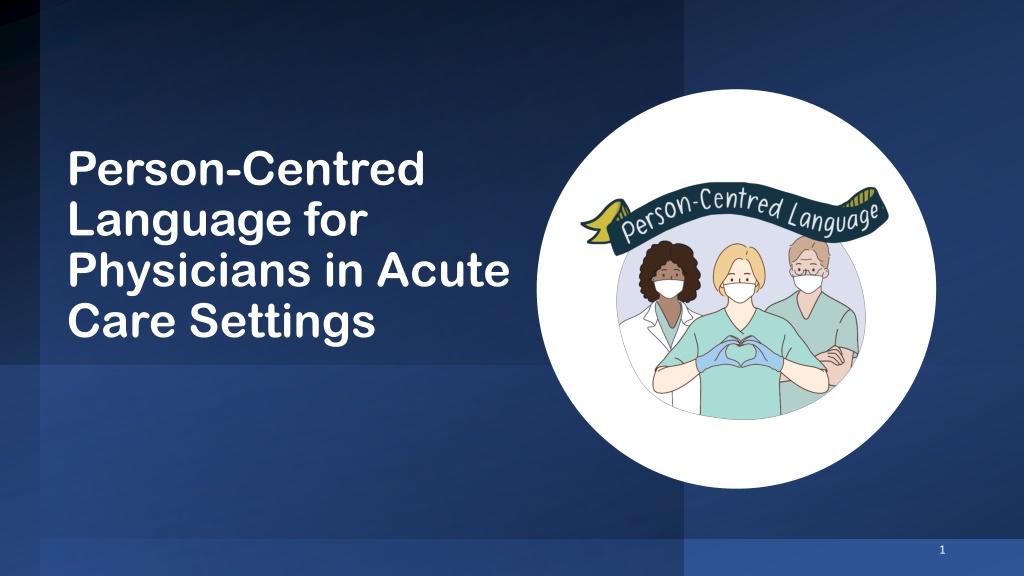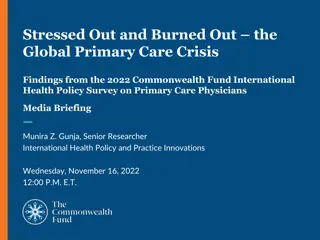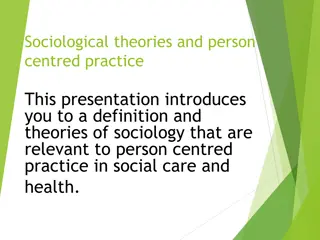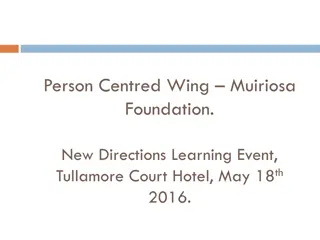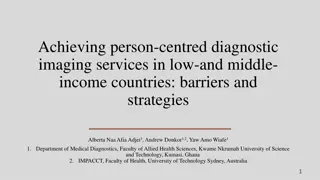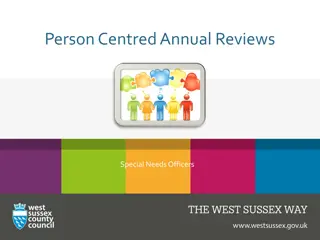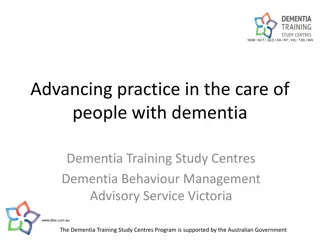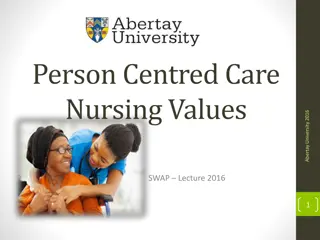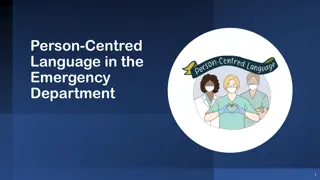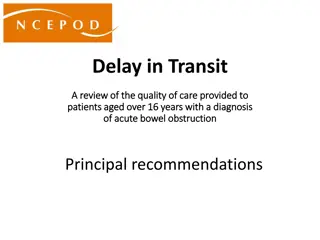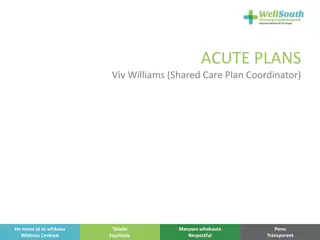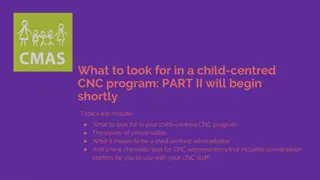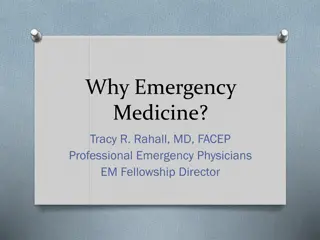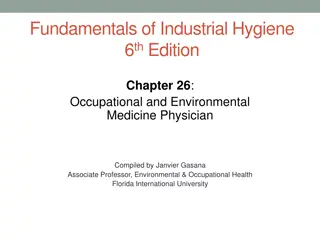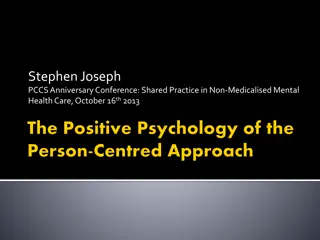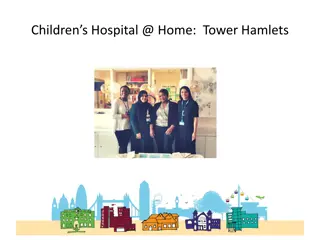Enhancing Communication in Acute Care: Person-Centred Language for Physicians
Person-Centred Language (PCL) plays a crucial role in acute care settings, influencing patient-provider interactions and care outcomes. This approach emphasizes respect, specificity, and objectivity in communication, enhancing patient satisfaction and engagement. By using language that is respectful and patient-focused, physicians can improve patient experiences, build trust, and contribute to more effective care delivery. Understanding the impact of language on patients and the importance of being specific and objective can lead to better clinical outcomes and improved quality of care.
Download Presentation

Please find below an Image/Link to download the presentation.
The content on the website is provided AS IS for your information and personal use only. It may not be sold, licensed, or shared on other websites without obtaining consent from the author. Download presentation by click this link. If you encounter any issues during the download, it is possible that the publisher has removed the file from their server.
E N D
Presentation Transcript
Person-Centred Language for Physicians in Acute Care Settings 1
Module Objectives In this module, we will do the following: 1. Define person-centered language 2. Acknowledge the impact of person-centered language in acute care settings 2
What is Person Centered Language? Person-Centered Language (PCL) is language that is specific objective respectful 3
Why is Person-Centred Language Relevant? Our written and verbal language is a reflection of our professional behaviour Medical records are accessed by patients and family The language we use today shapes the perception of care providers in the future 4
Case Study ID: Ms. Lee is an 82 year old woman, from home alone, admitted with failure to cope. Referred to Geriatrics for aggressive behaviors. PMH : Dementia with challenging behaviors, Hypertension, COPD, Osteoarthritis HPI : She was brought to the ED via EMS when her neighbor heard her yelling in the backyard. EMS reports that on arrival she was abusive and violent. In the ED, she was restless, violent and non-compliant with care. A code white was called and she required Haldol 2 mg IM stat. She was noted to be a poor historian. She had a fever in the ED. She was pan-cultured and started on antibiotics. When transferred to the floor she remained confused and uncooperative with care and became aggressive with nursing staff. 5
Person-Centered Language 6
Be specific and objective 7
Be specific and objective 8
When language is not respectful Stigmatizes the demented patient in bed 15 Dehumanizes the screamer Labels watch out, he s aggressive Infantilizes just go pee in your diaper 9
Impact on clinicians and health system This information helps the next clinician understand how they might approach this patient This information can guide the creation of care plans and the evaluation of care interventions Your notes may bias the next clinician who interacts with this patient Words have the power to affect discharge planning and patient access to long-term care 10
Case Study ID: Ms. Lee is an 82 year old woman, from home alone, admitted with failure to cope. Referred to Geriatrics for aggressive behaviors. PMH : Dementia with challenging behaviors, Hypertension, COPD, Osteoarthritis HPI : She was brought to the ED via EMS when her neighbor heard her yelling in the backyard. EMS reports that on arrival she was abusive and violent. In the ED, she was restless, violent and non-compliant with care. A code white was called and she required Haldol 2 mg IM stat. She was noted to be a poor historian. She had a fever in the ED. She was pan-cultured and started on antibiotics. When transferred to the floor she remained confused and uncooperative with care and became aggressive with nursing staff. 11
Case Study ID: Ms. Lee is an 82 year old woman, from home alone, admitted with failure to cope. Referred to Geriatrics for aggressive behaviors. PMH : Dementia with challenging behaviors, Hypertension, COPD, Osteoarthritis HPI : She was brought to the ED via EMS when her neighbor heard her yelling in the backyard. EMS reports that on arrival she was abusive and violent. In the ED, she was restless, violent and non-compliant with care. A code white was called and she required Haldol 2 mg IM stat. She was She was noted to be a poor historian. She had a fever in the ED. She was pan-cultured and started on antibiotics. When transferred to the floor she remained confused and uncooperative with care and became aggressive with nursing staff. 12
Case Study ID: Ms. Lee is an 82 year old woman, from home alone, admitted with dementia and responsive behaviors. She was referred to Geriatrics for assistance with aggression towards healthcare workers interfering with ability to provide medical care. PMH: Dementia with responsive behaviors, Hypertension, COPD, Osteoarthritis HPI : She was brought to the ED via EMS when her neighbour heard her yelling in the backyard. EMS reports that she was striking out at them when they attempted to restrain her. In the ED, she was not able to lie still in bed and tried to push staff away when they attempted to take vital signs. A code white was called and she required Haldol 2 mg IM stat. She was unable to give an accurate history. She had a fever in the ED. She was pan cultured and started on antibiotics. When transferred to the floor she was not oriented to person, place or time, had difficulty following one-step cues and would try to push the nurse away when they attempted to administer medications 13
Huddle Conversations https://www.youtube.com/watch?v=l4atclwMRlc https://www.youtube.com/watch?v=QBfcGET6nrk Playlist https://www.youtube.com/watch?v=l4atclwMRlc&l ist=PLbAIrQkgWI3-Vn8BFhJ2EnqV0f00Ak9rn 14
Special thanks to our team of expert reviewers! Barbara Liu, MD, FRCPC Rameez Imtiaz, MD, FRCPC Mary-Lynn Peters, RN(EC), NP-Adult, MSc Alekhya Johnson, MPH Developed by in partnership with 15
